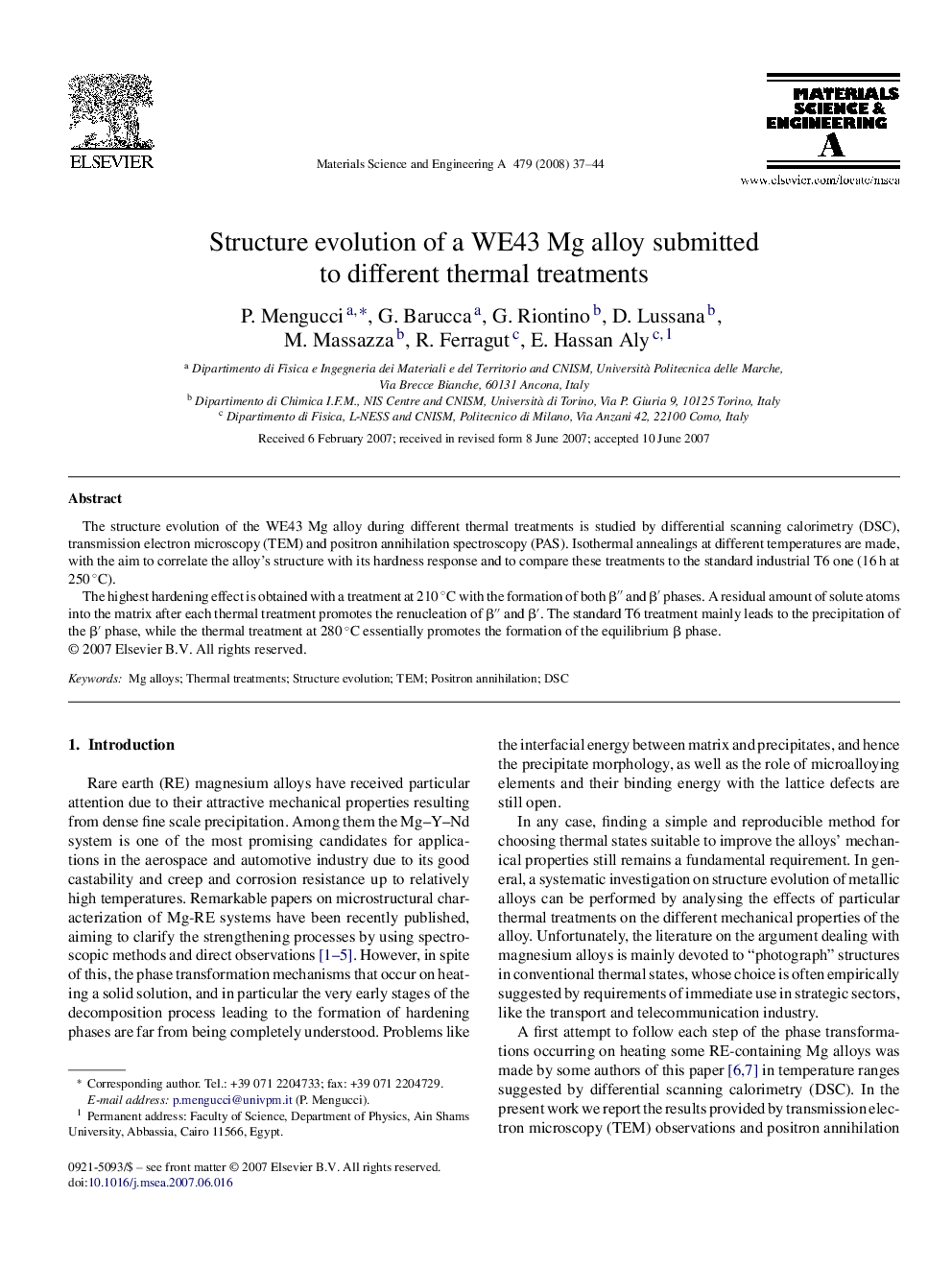| Article ID | Journal | Published Year | Pages | File Type |
|---|---|---|---|---|
| 1582931 | Materials Science and Engineering: A | 2008 | 8 Pages |
The structure evolution of the WE43 Mg alloy during different thermal treatments is studied by differential scanning calorimetry (DSC), transmission electron microscopy (TEM) and positron annihilation spectroscopy (PAS). Isothermal annealings at different temperatures are made, with the aim to correlate the alloy's structure with its hardness response and to compare these treatments to the standard industrial T6 one (16 h at 250 °C).The highest hardening effect is obtained with a treatment at 210 °C with the formation of both β″ and β′ phases. A residual amount of solute atoms into the matrix after each thermal treatment promotes the renucleation of β″ and β′. The standard T6 treatment mainly leads to the precipitation of the β′ phase, while the thermal treatment at 280 °C essentially promotes the formation of the equilibrium β phase.
